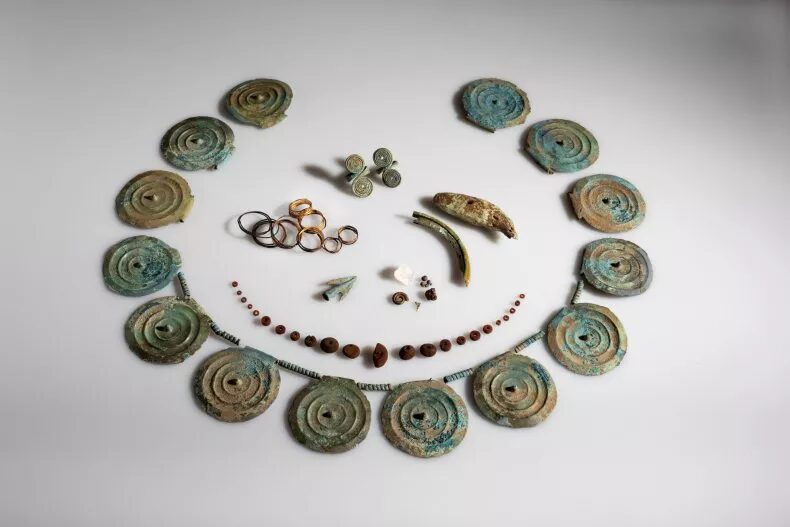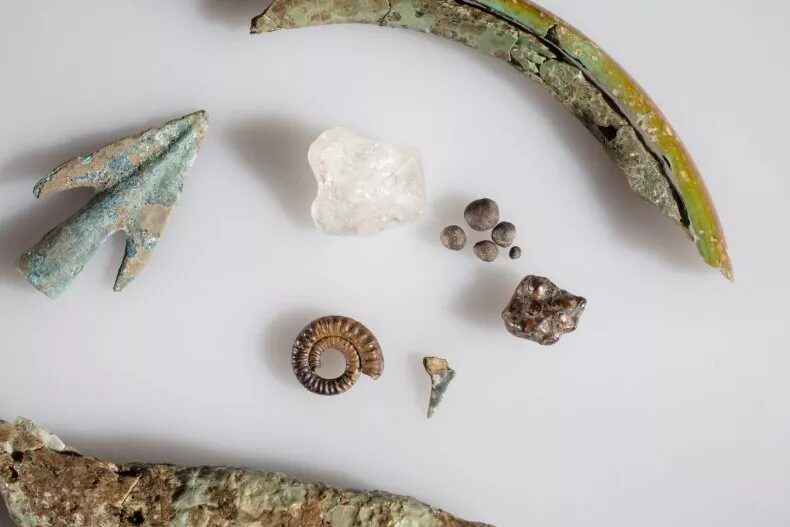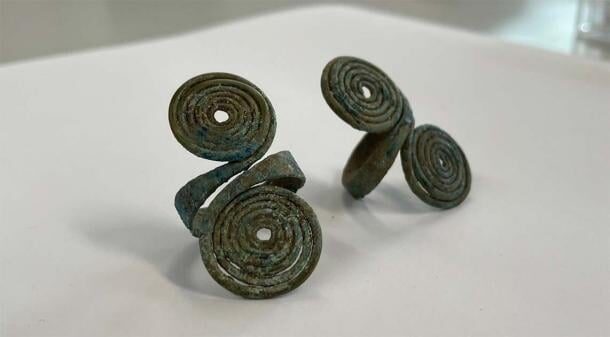
The hoard includes a necklace made of bronze spiked discs, two finger rings, gold wire spirals and more than 100 tiny amber beads. It also contains several more unusual finds, such as a rock crystal, a beaver tooth, a perforated bear tooth, a bronze arrowhead, a few lumps of polished iron ore, a small ammonite shell and a fossilized shark tooth, among other items.
The hoard, which is thought to date to around 1500 B.C., or roughly 3,500 years ago, was discovered in August by an amateur archaeologist named Franz Zahn in a freshly plowed carrot field in the municipality of Güttingen in northeastern Switzerland.
Zahn immediately reported the find to the canton of Thurgau's Office of Archeology (OA), which arranged for experts to document and recover the artifacts the next day.
"This find from Güttingen is a sensational discovery of great scientific value," Irene Ebneter, head of collections at OA, told Newsweek. "On the one hand, it is a very rare ensemble of finds that is unique in Switzerland. On the other hand, the combination of finds in this hoard is extremely exciting."
Ebneter said 14 spiked discs were recovered from the hoard. These discs were a typical form of jewelry worn by women in this region during the Middle Bronze Age, around 1500 B.C.
"In addition to the pieces of jewelry made from bronze and gold, there were also extraordinary special finds," she said. "For example a pierced bear tooth, a beaver tooth, a fossilized shark tooth and a tiny ammonite. More than 100 amber beads and two finger rings complete the ensemble."
She went on: "Was a jewelry box hidden here? Were the collections of curiosities souvenirs? Or was there even more to it? Objects of this kind could have been attributed a special, protective or healing effect, and they were perhaps worn as a kind of amulet."
Zahn has been exploring the Güttingen area with his metal detector for years and previously made several notable discoveries, including artifacts from the Iron and Bronze ages.
At the beginning of August, he was exploring the freshly harvested carrot field — with the owner's permission — when he came across the spiked bronze discs. He immediately realized that he had made an extraordinary find and that the objects likely belonged to a collection of other artifacts.

The artifacts, some of which are very fragile, are being restored so they can be exhibited next year at a local museum. In addition, researchers are planning to conduct further scientific analyses of the items to uncover more information about them.
"The Office of Archeology owes a great deal of gratitude to the finder and the landowner — it is thanks to them that an extraordinary piece of evidence from Thurgau's past has been preserved," the OA said in a statement.




Three universal patterns.
1.circle
2. straight line
3. add 1 and 2 you get a spiral